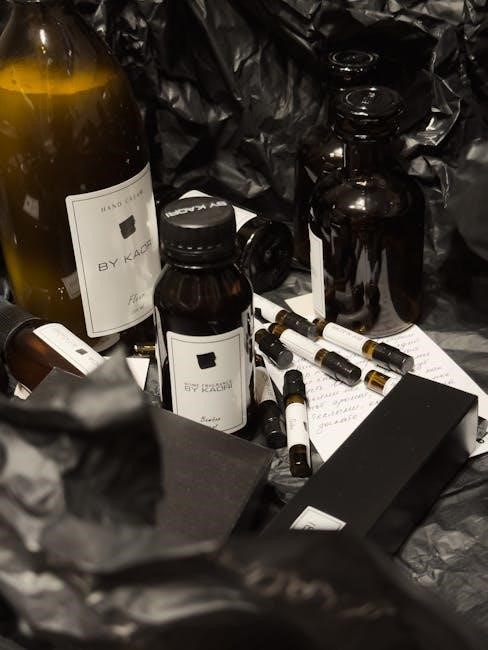An exclusive beat license agreement grants an artist sole ownership of a music producer’s beat, ensuring it isn’t sold to others. This contract defines usage rights, royalties, and ownership terms, protecting both parties legally.
Definition and Purpose of an Exclusive Beat License
An exclusive beat license is a legal agreement granting an artist sole rights to use a producer’s beat, preventing its resale. Its purpose is to ensure clarity on ownership, usage, and royalties, protecting both parties’ interests and facilitating a smooth creative process. This agreement is essential for maintaining exclusivity and preventing unauthorized use or distribution of the licensed material.
Importance of a Written Agreement in Music Production
In music production, a written agreement is crucial for protecting both producers and artists legally. It outlines ownership rights, usage terms, and royalty structures, preventing disputes. A clear contract ensures all parties understand their obligations, safeguarding creative and financial interests. This formal document is indispensable for maintaining professional relationships and ensuring smoother collaborations in the music industry.
Structure of an Exclusive Beat License Agreement
An exclusive beat license agreement outlines ownership rights, usage terms, payment structures, delivery methods, and termination clauses, ensuring clarity and legal protection for both parties involved.
Key Components of the Agreement
An exclusive beat license agreement includes definitions, grant of rights, payment terms, delivery methods, usage restrictions, exclusivity clauses, royalty structures, and termination conditions. These components ensure clarity, protect both parties, and outline the legal framework for the beat’s use and ownership. Proper documentation of these elements is essential for enforcing the agreement and preventing disputes.
Parties Involved in the Contract
An exclusive beat license agreement involves two primary parties: the music producer (licensor) and the artist or content creator (licensee). The producer owns the beat and grants exclusive rights, while the artist gains legal permission to use it. Sometimes, third parties like record labels or managers may also be involved. Clearly identifying all parties ensures accountability and legal clarity throughout the agreement.
Scope of the License and Usage Rights
The scope defines how the artist can use the beat, such as for commercial releases, live performances, or promotional content. Usage rights specify the number of allowed distributions, streaming platforms, and territories. Exclusive agreements typically restrict the producer from selling the beat elsewhere. This section ensures both parties understand the permitted uses and any limitations, preventing future disputes. It also outlines ownership retention by the producer.
Exclusive licenses provide artists with unique beats, enhancing their music’s originality. Producers gain guaranteed payments and royalty clarity, ensuring fair compensation for their work. This arrangement fosters creativity and financial security for both parties. Exclusive beat licenses offer producers guaranteed upfront payments and potential royalties. They retain ownership rights, ensuring control over their work. This arrangement attracts serious artists, reducing disputes and misuse. It also safeguards their intellectual property, providing legal clarity and financial stability, which is crucial for building a sustainable career in music production. Exclusive beat licenses provide artists with unique, high-quality productions that stand out in a crowded market. They gain exclusive usage rights, ensuring no one else can use the same beat. This enhances brand authenticity and prevents competition from sounding similar. Clear legal terms also protect artists from copyright disputes, allowing them to focus on creative expression and professional growth. An exclusive beat license agreement clearly defines ownership and royalty terms, eliminating disputes. It specifies that the producer transfers exclusive rights to the artist, ensuring the beat isn’t resold. Royalty structures are outlined, detailing how payments are calculated and distributed. This clarity protects both parties, preventing future conflicts and ensuring fair compensation for the producer’s work. Legal documentation safeguards intellectual property and creative contributions. Use a template or generator to draft the agreement, customize terms, and finalize with a professional review to ensure clarity and legal compliance, producing a PDF. Using templates simplifies creating an exclusive beat license agreement, saving time and ensuring legal compliance. Templates provide pre-drafted clauses, such as ownership rights, payment terms, and usage restrictions. They can be easily customized to fit specific needs. Many websites offer reliable templates designed for music production agreements. By using a template, producers and artists can quickly generate a professional document, reducing the need for extensive legal drafting from scratch. Customizing an exclusive beat license agreement ensures it aligns with the unique requirements of both the producer and the artist. Key areas to tailor include royalty rates, exclusive usage rights, and distribution limits. Clauses can be adjusted to reflect the scope of the project, such as territorial restrictions or specific usage permissions. Consulting a legal expert helps refine the agreement to address any special conditions, ensuring clarity and mutual understanding. Legal considerations are crucial when drafting an exclusive beat license agreement to ensure compliance with copyright laws. Consulting a music attorney is essential to verify the contract’s enforceability and protect both parties’ rights. Professional review helps identify potential loopholes and ensures all terms are clear and legally binding, safeguarding intellectual property and financial interests throughout the agreement’s duration. This step is vital for preventing future disputes. Negotiating terms is crucial for balancing producer and buyer interests. Key elements include exclusive rights pricing, royalty percentages, and territorial distribution limits. Legal advice is recommended. Pricing exclusive rights involves evaluating the beat’s value, the producer’s reputation, and usage rights. Factors include the producer’s demand, beat quality, and intended use. Exclusive agreements typically start around $1,200, with higher fees for well-known producers. Usage rights, such as commercial purposes or territory, can increase the price. Royalties may lower upfront costs if agreed upon. Legal advice ensures fair terms. Royalty rates in exclusive agreements are negotiated percentages paid to the producer for each use or sale of the beat. Payments are typically made by the artist or label, either upfront or as a percentage of revenue. These rates are usually fixed and non-recoupable, ensuring the producer earns income regardless of the song’s success. Clear terms in the agreement prevent disputes and ensure fair compensation for both parties. Territorial limits specify the regions where the beat can be distributed or used, while distribution limits define the platforms or mediums (e.g., streaming, physical sales). These clauses ensure exclusivity within agreed-upon boundaries, preventing unauthorized use outside the designated scope. Clear terms protect both parties by setting boundaries for how and where the beat is exploited, ensuring fair compensation and rights protection for the producer. The process involves selecting a beat, negotiating terms, reviewing the agreement, and completing payment. Both parties must agree on usage rights and ownership transfer. Finding the right beat involves browsing producer portfolios, listening to samples, and ensuring the style aligns with your artistic vision. Many producers showcase their beats on platforms like SoundCloud or personal websites. When selecting, consider tempo, genre, and emotional tone to match your project’s needs. It’s crucial to choose a beat that resonates with your creative direction. Always preview before committing. When approaching a producer, communicate clearly about your project goals and budget. Ask questions about the beat’s availability and exclusivity. Negotiate terms such as price, usage rights, and royalties. Ensure the producer understands your vision and expectations. Professionalism and transparency are key to building trust and securing a fair agreement. Always request a contract to formalize the terms before finalizing the purchase. Review the agreement thoroughly, ensuring all terms, including payment, usage rights, and delivery methods, are clearly stated. Upon mutual agreement, proceed with payment via agreed methods, such as bank transfer or secure online platforms. Once payment is confirmed, the producer will provide the beat files and a signed contract. Maintain all documentation for future reference and legal protection. This step ensures a smooth transaction and protects both parties’ interests. Exclusive beat license agreement templates provide a structured framework for creating legally binding contracts. They ensure clarity on ownership, usage rights, and payment terms, protecting both parties effectively. Reliable exclusive beat license agreement templates can be found on legal websites like LegalZoom, Rocket Lawyer, or music production platforms. These templates are designed to ensure legality and clarity. Many websites offer customizable options to fit specific needs. Additionally, marketplaces like BeatStars provide templates tailored for music producers. Always choose templates from reputable sources to guarantee compliance with copyright laws and protect both parties’ interests. A reliable exclusive beat license agreement template should include clear terms like ownership rights, usage restrictions, payment structures, and termination clauses. Ensure it defines royalty rates, distribution limits, and copyright protections. Look for customization options to tailor the agreement to specific projects. Reputable templates will also include legal language to protect both producers and buyers, ensuring clarity and compliance with music industry standards. To create a professional exclusive beat license agreement, use a template and convert it into a custom PDF. Ensure the template includes fillable fields for names, dates, and terms. After customization, export the document as a PDF to maintain formatting and prevent edits. Many online tools offer PDF conversion options, ensuring your agreement is polished and legally binding. This step is crucial for finalizing and sharing the contract securely. An exclusive beat license agreement ensures the producer retains ownership while granting the buyer exclusive rights. Copyright law protects both parties, preventing unauthorized use and ensuring legal recourse for breaches. Copyright law protects original musical works, granting creators exclusive rights to reproduce, distribute, and perform their music. In an exclusive beat license agreement, the producer retains ownership while transferring specific usage rights to the buyer. Understanding these legal protections is crucial for both producers and artists to avoid disputes and ensure fair compensation for creative work. Violating copyright laws can lead to legal consequences, emphasizing the importance of clear agreements. An exclusive beat license agreement transfers ownership of a beat’s exclusive rights from the producer to the buyer. Once signed, the producer cannot resell or reuse the beat. The agreement ensures the buyer gains sole rights to use the beat for their projects, while the producer retains residual ownership. This transfer is finalized in a written agreement, detailing the scope and terms of the exclusive rights granted. Breaching an exclusive beat license agreement can result in legal action, financial penalties, or termination of rights. Unauthorized use or resale of the beat may lead to copyright infringement claims. The offending party may face lawsuits, damages, or loss of credibility. It is crucial to adhere to the terms to avoid these consequences and maintain a professional reputation in the music industry. The agreement can be terminated due to a breach of contractual terms or by mutual agreement. Upon expiration, rights revert to the producer unless renewed. An exclusive beat license agreement can be terminated if either party breaches the terms, such as failure to pay royalties or unauthorized use/distribution of the beat. Mutual agreement or material breach, like copyright infringement, also triggers termination. The producer retains ownership, and the artist must cease usage. Termination clauses outline specific conditions and procedures to ensure clarity and protection for both parties involved in the agreement. An exclusive beat license agreement typically includes a set term, after which it expires unless renewed. Renewal options may require mutual agreement and could involve renegotiating terms or fees. If not renewed, the producer regains full rights, and the artist must cease use. Clear expiration and renewal terms ensure both parties’ rights are protected and provide a structured path for continuing the collaboration if desired. After the agreement ends, the artist must cease using the beat, and the producer regains exclusive distribution rights. Post-termination, the artist may be required to destroy or return all copies of the licensed material. Any unpaid royalties or fees must be settled. The producer may also reclaim ownership, ensuring no further unauthorized use. This ensures a clean transition and protects both parties’ interests beyond the agreement’s lifespan. The producer delivers the beat in agreed formats, ensuring high quality. Distribution methods and tracking compliance are outlined to protect both parties’ interests effectively. An exclusive beat license agreement typically specifies the file formats and quality standards for delivery. Common formats include high-quality WAV (24-bit or higher) and MP3 (320 kbps). The producer ensures the beat is delivered in the agreed format, often including stems for flexibility. Clear quality standards protect both parties, ensuring the producer provides professional-grade audio and the artist receives material suitable for their project needs. Exclusive beat license agreements outline specific methods for delivering and transferring the beat. Common practices include digital delivery via email, file-sharing platforms like WeTransfer, or cloud storage services. Some agreements may require physical delivery, such as mailing a USB drive. A delivery receipt or confirmation is often included to verify successful transfer, ensuring both parties acknowledge the exchange and its terms. Tracking usage and compliance ensures both parties adhere to the agreement terms. Producers often use digital watermarks or metadata to monitor unauthorized use. Delivery receipts confirm the beat was received, while royalty tracking systems ensure accurate payments. Regular audits or reports may be required to verify proper usage and compliance, safeguarding both the artist’s and producer’s rights under the exclusive beat license agreement. Payment terms outline upfront fees or royalty-based payments, ensuring clarity on financial obligations. Structures may include percentage-based royalties or flat fees, with payment schedules defined to safeguard both parties’ interests. An exclusive beat license can be purchased with an upfront fee, granting immediate ownership, or through royalty-based payments, where the buyer pays a percentage of earnings from the beat’s use. Upfront fees provide immediate financial relief to producers, while royalties offer long-term income. Both structures must be clearly defined in the agreement to ensure transparency and mutual benefit for all parties involved. In an exclusive beat license, royalties are typically calculated as a percentage of revenue generated from the beat’s use. Payments are usually scheduled monthly or quarterly, with detailed sales reports provided to the producer. Both parties must agree on the royalty rate and reporting methods to ensure transparency. Clear terms in the agreement prevent disputes and ensure fair compensation for all involved. Exclusive beat license agreements often outline accepted payment methods, such as bank transfers, PayPal, or cryptocurrencies. Currency options typically include USD, EUR, or the buyer’s local currency. The agreement should specify payment terms, including due dates and late fees, to ensure clarity and avoid disputes. Both parties must agree on the payment structure to facilitate smooth transactions and maintain a professional relationship. Failing to seek legal advice can lead to disputes. Overlooking key clauses may result in unforeseen issues. Not verifying ownership rights can cause legal complications later. Not seeking legal advice can lead to unclear terms, disputes, and financial losses. Legal experts ensure agreements are enforceable and protect both parties’ rights. Without proper guidance, producers and artists may overlook critical clauses, leading to misunderstandings about ownership, royalties, and usage rights. Legal review ensures compliance with copyright laws and prevents potential breaches, safeguarding long-term interests. Ignoring this step risks costly disputes and jeopardizes the agreement’s validity. Overlooking key clauses in an exclusive beat license agreement can lead to disputes and financial losses. Important terms like royalty rates, usage rights, and termination conditions must be clearly defined. Failing to address these details can result in misunderstandings about ownership and payment structures. Producers and artists should carefully review each clause to ensure mutual understanding and avoid potential conflicts. Skipping this step can lead to costly legal battles or lost revenue. Failing to verify ownership rights before signing an exclusive beat license agreement can lead to legal disputes. Ensure the seller has full rights to the beat and can grant exclusive use. If ownership is unclear or shared, it may result in disputes or claims from other parties. Always confirm the producer’s authority to sell the beat to avoid potential legal issues or financial losses down the line. An exclusive beat license agreement is crucial for protecting both producers and artists, ensuring clear ownership and usage rights while preventing legal disputes and fostering fair compensation. An exclusive beat license ensures producers and artists are protected, offering sole ownership and usage rights. It prevents resale, provides legal safety, and clarifies royalties and ownership terms, avoiding disputes. This agreement is vital for fair compensation and smooth collaboration, safeguarding creative rights while fostering professionalism in the music industry. Professional and legal compliance is crucial in exclusive beat licensing. Using standardized templates and ensuring legal reviews protect both parties. Clear communication and mutual understanding prevent disputes. Adhering to these practices safeguards rights, ensures fair compensation, and maintains professional integrity. Compliance fosters trust and smooth business operations, essential for successful collaborations in the music industry.Benefits of an Exclusive Beat License
Advantages for Music Producers
Advantages for Artists and Content Creators
Ensuring Ownership and Royalty Clarity

How to Create an Exclusive Beat License Agreement
Using Templates for Efficiency

Customizing the Agreement for Specific Needs
Legal Considerations and Professional Review

Negotiating Terms of the Agreement
Setting the Price for Exclusive Rights
Understanding Royalty Rates and Payments
Defining Territorial and Distribution Limits

The Process of Purchasing an Exclusive Beat
Finding the Right Beat for Your Project
Approaching the Producer or Seller
Finalizing the Agreement and Payment
Exclusive Beat License Agreement Templates
Where to Find Reliable Templates Online
What to Look for in a Template
Converting Templates into a Custom PDF

Legal Implications and Copyright Issues
Understanding Copyright Law in Music
Transferring Ownership and Exclusive Rights
Consequences of Breaching the Agreement

Termination and Expiration of the Agreement
Conditions for Termination

Expiration and Renewal Options
Post-Termination Rights and Obligations
Delivery and Distribution of the Licensed Beat
File Formats and Quality Standards
Methods of Delivery and Transfer
Tracking Usage and Compliance


Payment Terms and Royalty Structures
Upfront Fees vs. Royalty-Based Payments
Calculating and Reporting Royalties
Payment Methods and Currency Options
Common Mistakes to Avoid
Not Seeking Legal Advice
Overlooking Key Clauses in the Agreement
Not Verifying Ownership Rights
Summarizing the Importance of an Exclusive Beat License
Encouraging Professional and Legal Compliance
